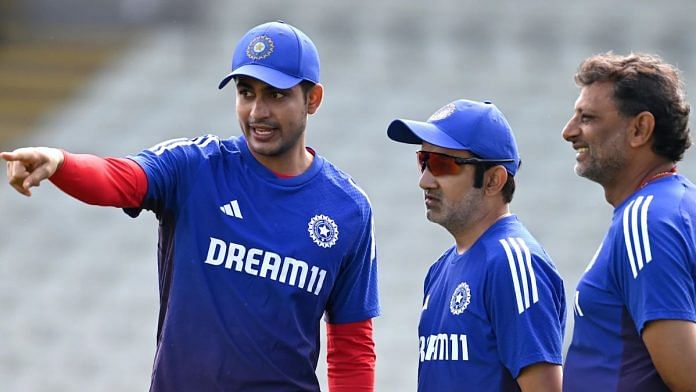The Indian team management, now led by coach Gautam Gambhir, must be sipping something stronger than coffee, because there’s no sane justification for dropping Sai Sudharsan from the second Test against England at Edgbaston.
And, not picking Kuldeep Yadav in the playing XI just made it all the more worse.
The shuffle screams one thing loud and clear: the team management is second-guessing itself. It’s like they walked into a buffet, piled everything onto the plate, and are now hoping something magically tastes right. Confidence in their own selections is nowhere to be found.
After the first Test hiccup, the vibe is pure panic mode. Experiments, tweaks, and crossed fingers—pushing the team on the back foot not only in the dressing room, but also in front of the opponents.
Instead of sticking to a clear plan, Gambhir and the selection committee are playing musical chairs with the lineup, hoping that eventually, something clicks.
Out of all, it is Gambhir who should remember that in the transition phase, clear communication between the think tank and younger players and giving them an environment where their heads are not at stake in each game is the least a coach of his power should do.
Let’s not repeat the Karun Nair story all over again.
Also read: IPL expansion will kill Test cricket. Players no longer care about playing for the country
Strong lower order at what cost?
Following his debut in the series opener, Sudharsan was axed after just one game. Along with him, Jasprit Bumrah was rested and Shardul Thakur was left out. Their replacements: Akash Deep, Washington Sundar, and Nitish Kumar Reddy.
If Sudharsan was dropped due to an underwhelming debut performance, it certainly wouldn’t be the first instance of a cricketer struggling in their first Test. History is full of such examples—Parthiv Patel (2002), Wriddhiman Saha (2010), Dean Elgar (2012), Jimmy Cook (1992), and Graham Gooch (1975), all failed to score in their debut innings.
Even some of India’s Test greats struggled in their debut. Virat Kohli scored 4 and 15 in his debut against West Indies in 2011, Cheteshwar Pujara managed just 4 in his first outing against Australia in 2010, Rishabh Pant scored 24 and 1 in his 2018 debut versus England, while KL Rahul scored 3 and 1 against Australia in 2014.
Clearly, a rocky debut isn’t a fair measure of future potential. Hence, Sudharsan’s omission raises more questions than answers.
If the aim was team balance, it still feels like a rookie move to pick Washington Sundar over Sai Sudharsan—it comes across as a desperate attempt to prep up the lower batting order and avoid another collapse like we saw in Leeds.
India is now fielding three all-rounders to strengthen the tail, but at what cost?
When your most lethal wicket-taker is being rested, sacrificing bowling firepower for batting depth seems questionable.
This is after Gambhir, in a 2023 tweet, wrote, “It’s the bowlers who win you tournaments.”
Well, the coach should at least practice what he preaches.
Choosing spin-bowling all-rounder Washington Sundar over Kuldeep Yadav’s left-arm wrist spin is baffling.
Between the two, it’s a no-brainer that Kuldeep offers far more bite, especially given England’s struggles against wrist-spin.
Since 2022, the England batters have averaged just 30.50 against leg-spinners, while Kuldeep has claimed 19 wickets at a strike rate of 36.
His exclusion defies cricketing logic.
Views are personal.
(Edited by Aamaan Alam Khan)






